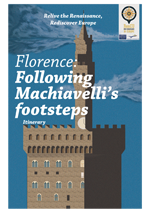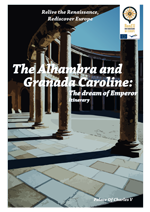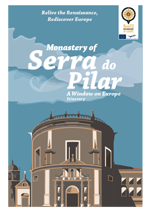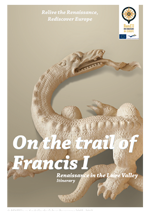Identity and Diversity
The relationship between identity and diversity brings us to the heart of Renaissance society, with its values and its contradictions. The theme can be analyzed from a plurality of different viewpoints: the diversity (or identity) can be religious, cultural, social or, not least, of gender. In the European countries, various models of integration (or non-integration) have been put into practice; at the same time, however, a "different" culture that has been subdued can survive within a dominant culture. Moreover, the role of woman in the culture and society of the Renaissance can be highly interesting for reflection on the process of emancipation, not yet to be considered entirely resolved.
Reflection on the relationship between identity and diversity in the Renaissance serves a dual function; on the one hand, it can help us to trace the formation of our European identity "historically", and on the other it can furnish interesting examples of integration even at historical moments when it was least to be expected. The construction of the European Union has, in fact, raised the problem of the coexistence of very different identities and cultures, as well as that of relations with the non-European cultures that Europeans are increasingly brought into contact with through immigration.
Related itineraries
![]() Following Machiavelli’s footsteps
Following Machiavelli’s footsteps

The Florentine itinerary "Following Machiavelli's footsteps" invites us to reflect on the diversity of gender in the Florentine culture and society of the Renaissance, as seen through the eyes of Niccolò Machiavelli. Machiavelli was a man particularly sensitive to the opposite sex, and often perturbed by it. However, he remained a man of his time, and was unable, even when faced with such emblematic cases as that of Caterina Sforza, to overcome his prejudices.
![]() The Alhambra and Granada Caroline: the dream of Emperor
The Alhambra and Granada Caroline: the dream of Emperor

The Alhambra itinerary allows us to consider in the broadest possible manner the relationship between identity and diversity, insofar as it shows the encounter between two cultures, the Christian and the Islamic, after the conquest of Granada. In several places in the Alhambra we can admire artistic and architectural contaminations between the Islamic and the Catholic world; at the same time, we are invited to take under examination and analyze the processes of Christianization and the efforts to assimilate the formerly Islamic families who did not emigrate.
![]() Monastery of Serra do Pilar: a window on Europe
Monastery of Serra do Pilar: a window on Europe

The relationship between identity and diversity appears also in the Monastery of Serra do Pilar itinerary, where the theme of education emerges. In the Portuguese Renaissance, education was still restricted to the nobility and the newly-emerging upper middle class, but its duration was increased and extended to women as well.

In the itinerary devoted to King Francis I and the Loire Valley we find the relationship between identity and diversity among neighbouring social classes, that is the ancient hereditary nobility and the modern mercantile class that was acquiring ever increasing power, and often titles of nobility as well. The ancient nobility made no attempt to conceal its contempt for the new nobles, who in turn attempted to have their comparatively humble origins forgotten by providing patronage, as the old nobility had never done, to humanist scholars and artists.